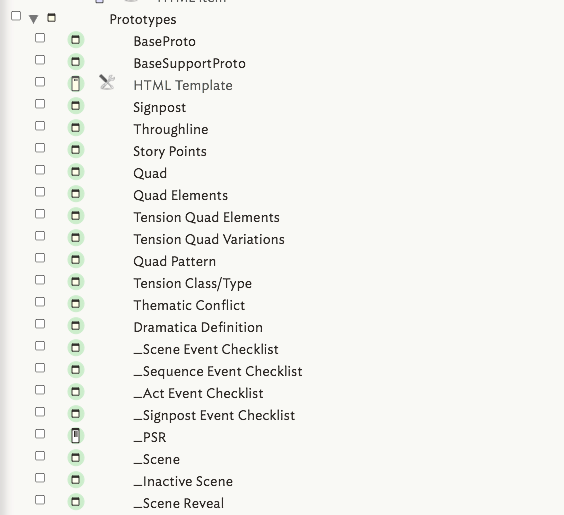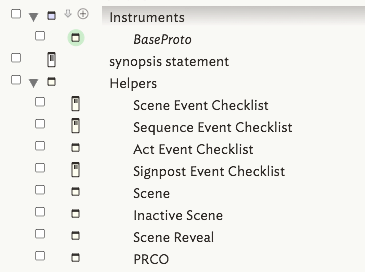(Reposted so people can see it today)
I’ve created an example here for how to use Tinderbox for Dramatica Story Structure, but the ideas really work for anything, including John Truby, Save the Tiger, Syd Field, McKee, and my two favorites, Jack Bickham, whose analysis of scene structure is still the gold standard, and Dwight Swain’s handy bag of easy to use tools.
I’ve long been looking for a tool that would let me throw the structure up, do some writing, then yank the structure away so I can see what the writing looks like, then throw the structure back–and so all this FAST, as I’m deep in the creative writing space.
Here’s how you do that. I made a video for you, and I am uploading the sample .tbx. I’m around if you have specific questions.
Hmm I should add a note about snapping back and forth between outline and map and why that works too…I’ll do that later.
public display tinderbox html template.tbx.zip (66.5 KB)
There’s the document, and there’s the video:
Story Structure Using Tinderbox and HTML Templates - YouTube o
@JFallows thought you’d like to see this.


